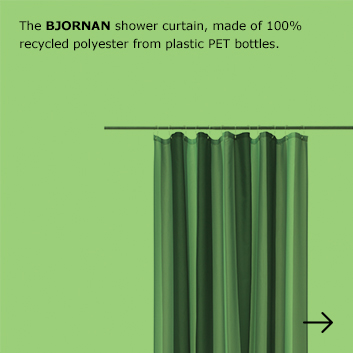Environment

We reduce waster of raw materials.
We protect the environment.
We recycle batteries by placing them in the designated AFIS bins.
A battery’s life cycle cannot be interrupted. Most batteries contain toxic heavy metals and corrosive acids. The used heavy metals are mostly obtained from extraction rather than from synthetically produced chemical substances and are thus not biodegradable.
By throwing batteries in the garbage, hazardous heavy metals can leak out into the environment and contaminate groundwater. In addition, the explosions of flammable waste materials in landfills release poisonous gases. These in turn are absorbed by plants and animals through soil, water and air and even make their way into the food chain. Thereby poisonous substances reach the human body, as it is the final consumer in the food chain.
As the aforementioned substances are not biodegradable and cannot be expelled, they cause the effect of bioaccumulation. Almost all systems of the body are affected by the toxicity of the heavy metals and cause long lasting diseases. So,
- Rethink before throwing batteries away.
- Not recycling batteries can have severe impacts on our health.
- We do not throw hazardous substances into the environment in order to avoid their returning into our food and water chain.
- We protect our health by recycling!
By recycling 1 battery:
- We save up to 400 m3 of water
- We protect 1 m3 of soil
- We reduce CO2 emissions by 1%
- We save up to 80% of energy
Why should we recycle our batteries?
- We protect the environment from pollutants.
- We protect our health, by mitigating the amount of hazardous substances and contaminants from entering groundwater and being absorbed by humans and any living organism.
- We encourage circular economy through the reusability of valuable raw materials, and save energy for the production of new batteries.
- We reduce the amount wasted in the already overloaded landfill sites.
Say Hej! to a more sustainable future!
We phased out all single-use plastic.
We want to contribute to a world without waste and enable people to make more sustainable choices. An important goal of our sustainability strategy is that all plastic used in the IKEA home furnishing range will be based on renewable or recycled material by 2030.
Phasing out single-use plastic disposables from the home furnishing range and from our restaurants, cafes and bistros is one of many things we will do to contribute towards a more sustainable future. So, we replaced items like straws, cutlery, cups and plates by disposables made from 100% sustainable materials.
ΙΚΕΑ products

Enjoy your drink in a sustainable way, knowing that the FÖRNYANDE straws are made from recyclable paper.
We phased out the plastic waste bags and we are making new from environmentally friendly materials.

Wooden cutlery
We replaced plastic cutlery with recyclable forks, spoons and knives made from responsibly sourced wood.

Sustainable paper straws
The new straws in our restaurants, bistros and cafes are made from paper from sustainably managed forests. You will also find paper straws in our range to use at home too – available to buy in our stores and at ΙΚΕΑ e-shop.
COTTONWe use high-quality cotton produced using sustainable cultivation practices. |
 |
Cotton is a very important raw material for IKEA, as it is used in a wide range of products, from towels to sofas. However, large quantities of chemicals and water are applied to conventional cotton crops, thus increasing the cost of production and making the farmers' struggle for survival that much harder. So we decided to find a way to confront these challenges and made a commitment to contribute actively to improving the cotton industry. |
|
 |
As a result, we started working with the WWF in 2005, in view of supporting and encouraging sustainable cotton farming practices throughout the world. Today, thousands of farmers and their families are enjoying the fruits of their efforts. |
In 2010, IKEA teamed up with the World Wildlife Fund and other leading public and private organizations, to create the Better Cotton Initiative (BCI). |
|
Also, since September 2015, we only use cotton produced by farms incorporating sustainable cultivation practices for IKEA products. This means that farmers use less water, fewer chemical fertilizers and pesticides, while seeing an increase in their profits; this alone is a great achievement. At the same time, however, it marks yet another challenge for us. To maintain this rate at 100% and find more ways of supporting cotton farmers all over the world, in incorporating an increasing number of sustainable cultivation practices. |
|
LED LIGHTING We use only LED light-bulbs |
|
Since September 2015, IKEA sells only LED light-bulbs. Why? Because LED technology uses 85% less energy and LED light-bulbs last 20 times longer than conventional incandescent bulbs! |
|
 |
A home with LED lighting is a sustainable home with infinite possibilities |
LED lighting is a design revolution. But it is also an energy-saving revolution. Thus, if you replace all light-bulbs in your home with LED bulbs, you will be saving energy and money.
|
|
 |
|
At IKEA, we want to make opting for a more sustainable lifestyle at home, easier. And LED lighting does exactly that. All you have to do, is replace your conventional light-bulbs with LED bulbs.
|
|
|
At IKEA, we acknowledge that a significant quantity of water is consumed at our facilities, due to hygiene requirements and the large number of visitors and employees. This is why we monitor water consumption on a systematic basis, and apply special measures, practices and interventions in order to reduce consumption at our facilities. |






















